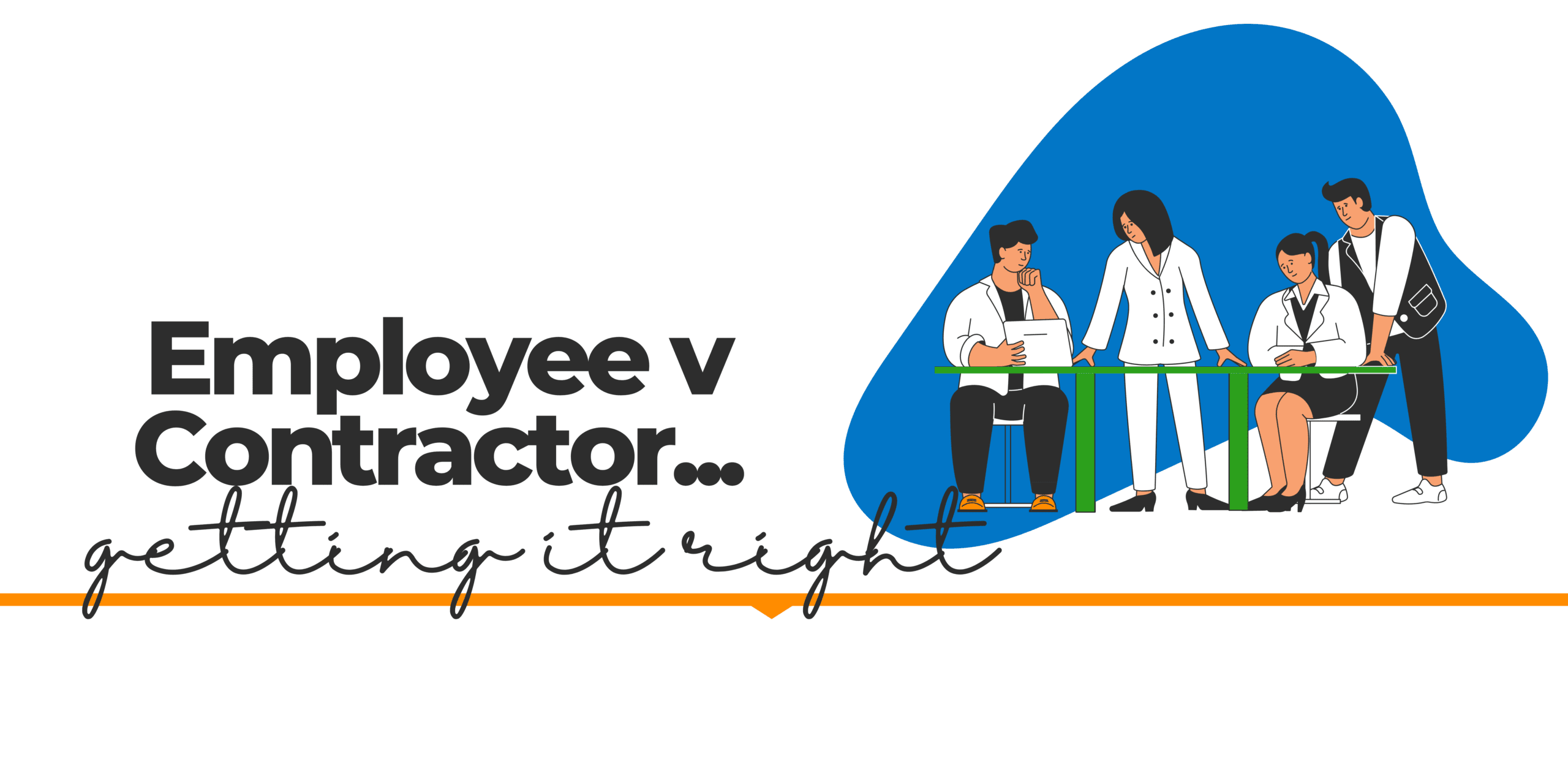
Hiring help in your business? It’s tempting to take someone on as a “contractor” — less admin, no super, no leave entitlements, right?
Not so fast.
Just because you call someone a contractor and pay their invoices doesn’t mean the ATO, Fair Work, or WorkCover sees them that way. And if they decide you’ve got it wrong, you could be liable for unpaid entitlements, super, penalties, and more.
Let’s break down what you need to know before bringing someone into your business—so you can make the right decision the first time.
What’s the real difference?
At a basic level:
➡️ Employees work under your direction and are part of your business.
➡️ Contractors operate independently, running their own business and delivering outcomes.
➡️ But the legal test isn’t just about labels. It’s about the total nature of the relationship — and how it functions day to day.

You can pay them via invoice, agree to “no entitlements,” and still be seen as their employer under the law.
Why? Because the authorities (like the ATO, Fair Work, and WorkCover) care more about what actually happens—not what’s written in the contract.
If the person:
Works regular hours under your supervision
Uses your tools and systems
Can’t subcontract their work
Is expected to be available long-term
Is integrated into your team
…then they may legally be an employee, even if you agreed otherwise.

A big part of assessing contractor status is how they’re set up legally.
Contractors operating through a company or trust…
These structures suggest they’re running a genuine business.
Less likely to be considered employees (though still possible depending on how the work is done).
Your obligations for super, PAYG, and entitlements may be reduced—but not eliminated.
Contractors operating as sole traders…
Much higher risk of being classed as an employee—especially if they’re being paid mainly for their personal labour.
Even if they issue invoices with an ABN, you may still be responsible for paying their super.
You may also need to include them in your payroll tax or WorkCover calculations.
⚠️Red flag: A sole trader working regular hours under your direction, using your tools and systems? That’s a big compliance risk—even if they’re calling themselves a contractor.

Six key things to check before hiring a contractor…
Who controls the work—me or them?
Can they work for other businesses at the same time?
Do they bring their own tools, insurances, and systems?
Are they paid for a result and not just for their time?
Will the engagement be short-term to achieve a specific outcome?
Are they structured as a company/trust?
If you’re answering “me” or “no” to most of these questions, or if they’re a sole trader, it’s worth doing some more research and confirming where things stand before proceeding.
What’s at Stake If You Get It Wrong…
Misclassifying someone can lead to:
Backpay for super, annual leave, sick leave
ATO penalties for unpaid PAYG
WorkCover audits and claims
Payroll tax reassessments
Legal disputes or unfair dismissal claims
It’s not just a tax issue—it’s a compliance and risk issue for your entire business.

Always refer to the official sources.
While this guide gives you a solid understanding of employee vs contractor obligations, it’s crucial to check the latest rules directly from the relevant authorities. The rules change often, and compliance depends on staying up to date.
Here’s where to go for the most current information:



